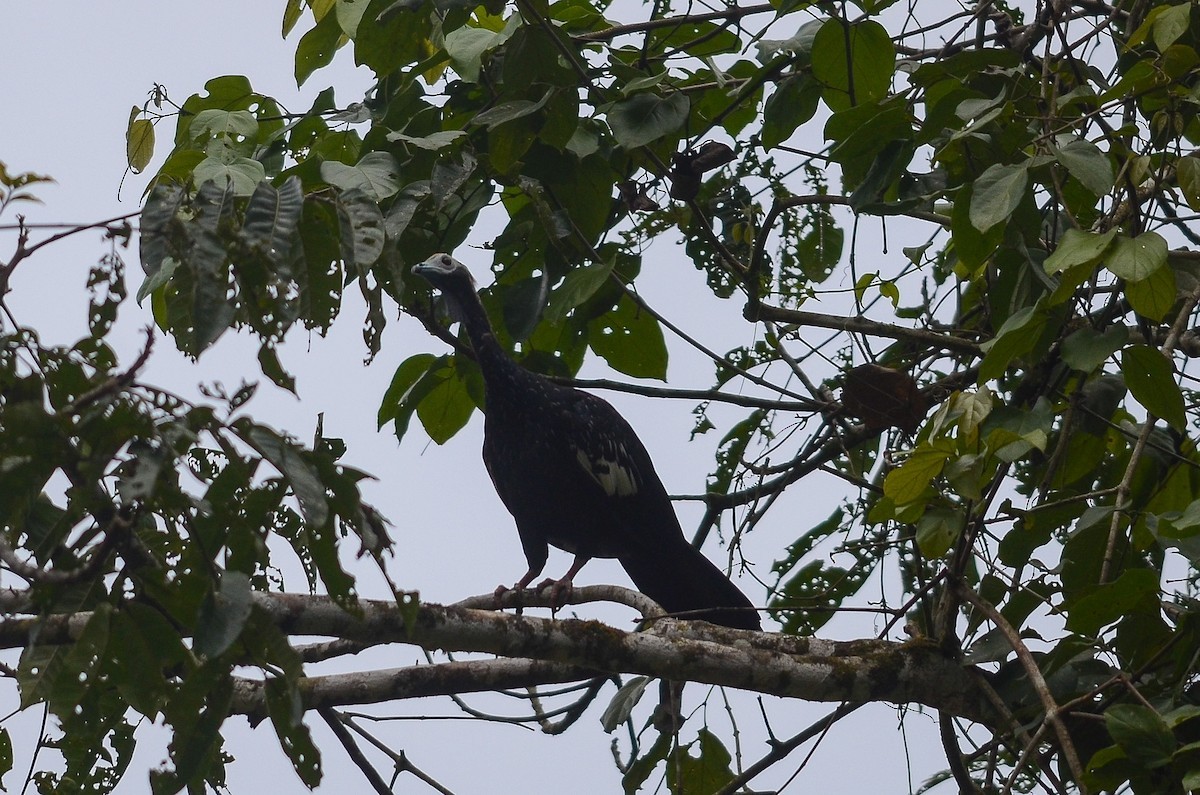Blue-throated Piping Guan
A species of Guan Scientific name : Pipile cumanensis Genus : Guan
Blue-throated Piping Guan, A species of Guan
Botanical name: Pipile cumanensis
Genus: Guan
Content
Description General Info
 Photo By Nikolaj Mølgaard Thomsen
Photo By Nikolaj Mølgaard Thomsen Description
The blue-throated piping guan is described as "oddly 'prehistoric' (reptilian)" but "handsome". It averages 69 cm (27 in) long, including its neck and tail, both long, the neck and head disproportionately thin and small, the tail disproportionately big. Most of the plumage is black with a greenish gloss—blue-green in cumanensis, olive in grayi. It has a large white patch on each wing, white flecks on the wing coverts and chest, a white patch over the eye, and a white or buffy-white nape (and upper neck in grayi). Both subspecies have a short white or buffy-white crest; in cumanensis it is shaggy and nearly solid-colored; in grayi it is hairier, and the feather shafts are black, appearing as streaks. The bill is baby-blue at the base and cobalt-blue at the tip. Both subspecies have blue bare flesh on the throat with a wattle in cumanensis and a hanging caruncle in grayi. The legs are red. During the breeding season it is noisy. At dawn it gives a "piping" call of 6 or so slow high-pitched, clear whistles, "slightly ascending in pitch, püüeee, püüeee, püüeee,…", reminiscent of the scale-backed antbird. Its flight display, at dawn or in the daytime, includes "2 quick wing-claps (often barely audible), then 2 whirring rattles with wings," the second seeming to reverse the first as in shuffling cards (Colombia and Venezuela). At other seasons it is usually silent. 
Size
69 cm
Nest Placement
Tree
Habitat
The blue-throated Piping Guan is found in tropical zone forests, preferring humid and semi-deciduous types, which include terra firme, várzea, and gallery forests. These habitats feature high biodiversity with average canopy heights of 15-20 meters. The species has an affinity for riparian areas, particularly thriving near river margins and forest edges up to elevations of 1,000 meters, often densely populating areas within 100 meters of rivers.
Dite type
Frugivorous
General Info
Feeding Habits
Bird food type

Fruit
Behavior
This species occurs in pairs during the breeding season and bigger groups, as many as 12, at other times. It walks nimbly or hops with help from its wings in the canopy or sub-canopy of the forest, especially in trees with flowers or fruit that it eats. To cross clearings it sets off with fast wingbeats and then glides, giving another flurry of wingbeats if needed to maintain its height. Where not hunted it is fairly common and easy to see. Little is known about its reproduction. In Colombia it has been observed in breeding condition in February and laying eggs in May. One nest was built of twigs in thick vegetation in the canopy and contained three yellowish-white eggs. 

 Photo By Nikolaj Mølgaard Thomsen
Photo By Nikolaj Mølgaard Thomsen